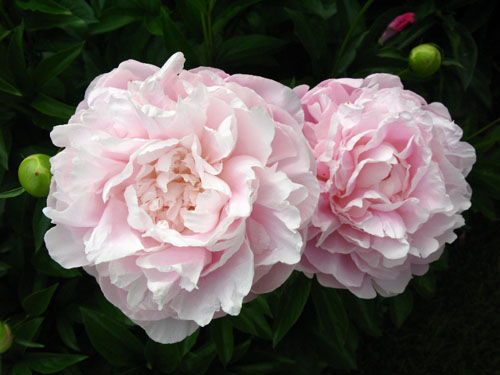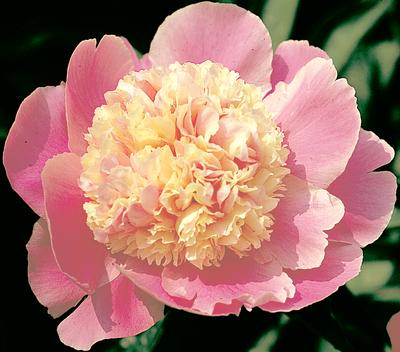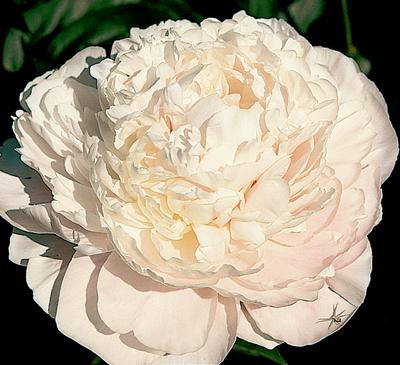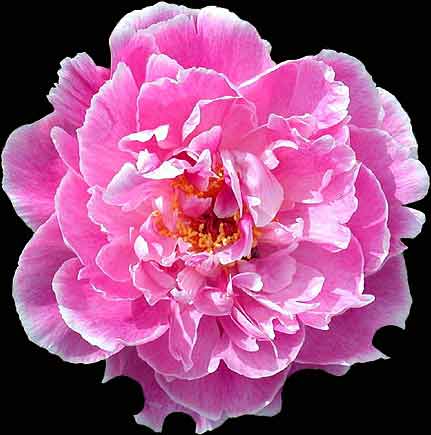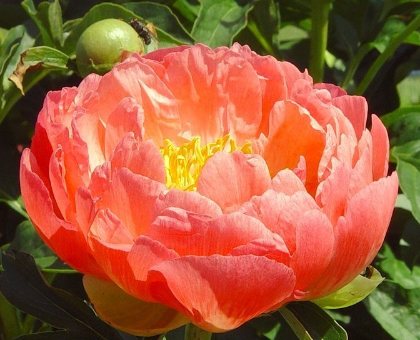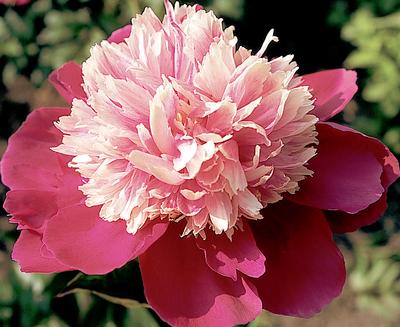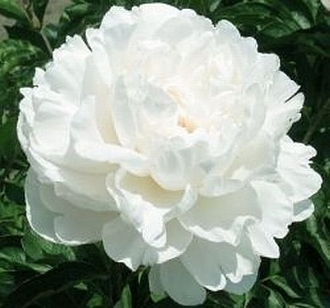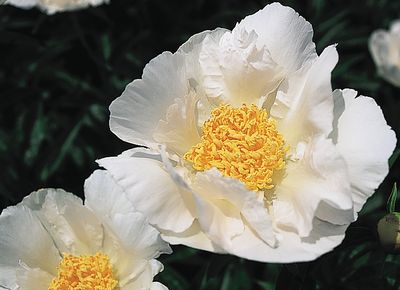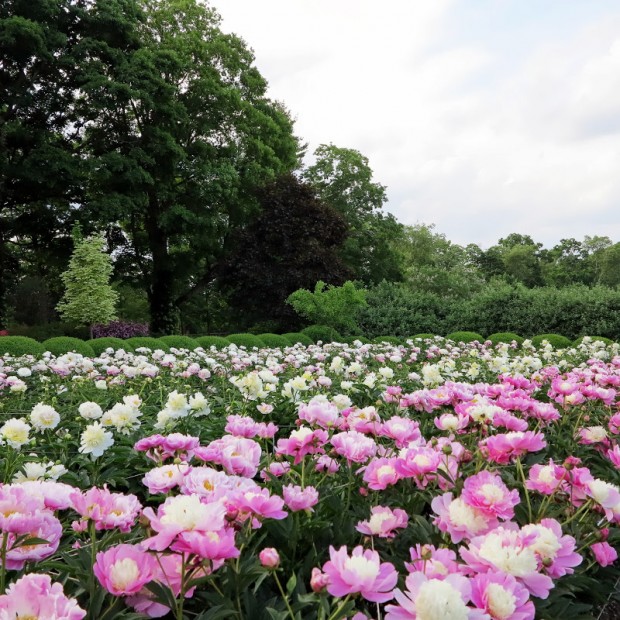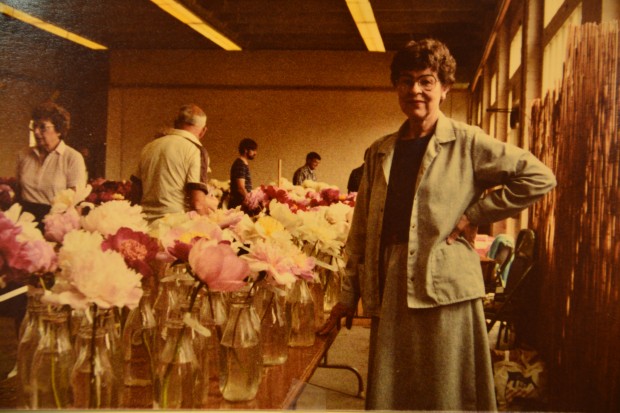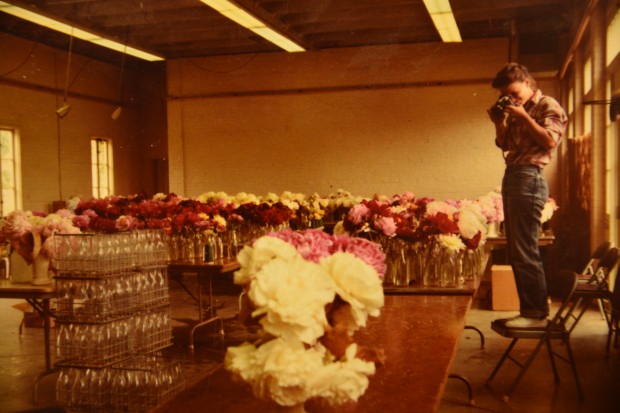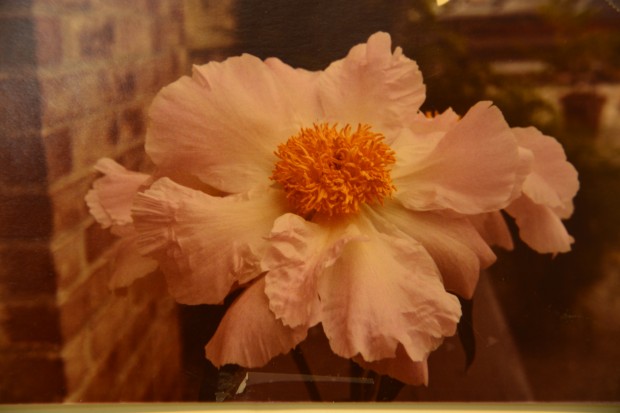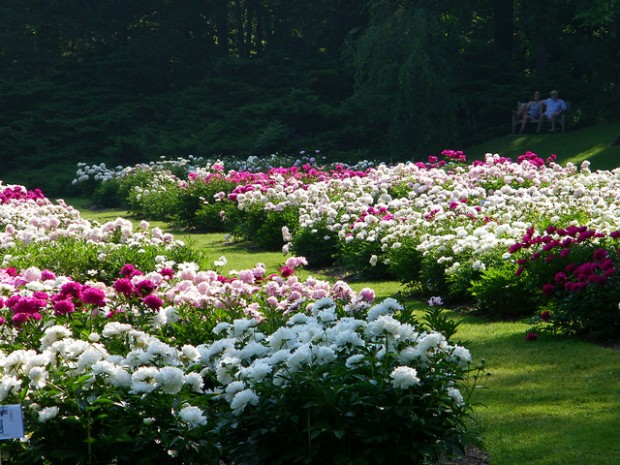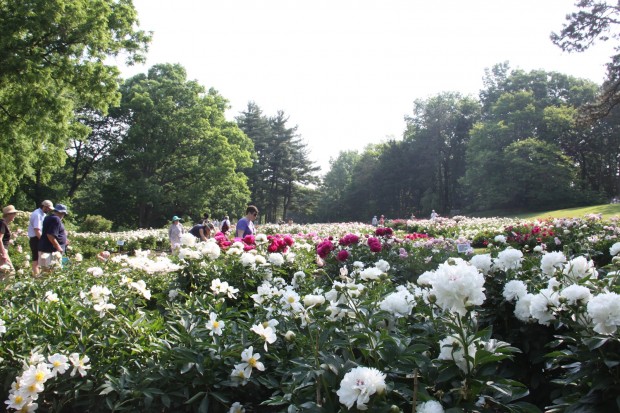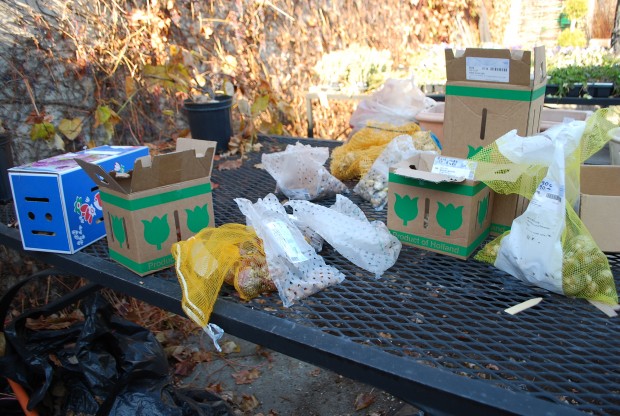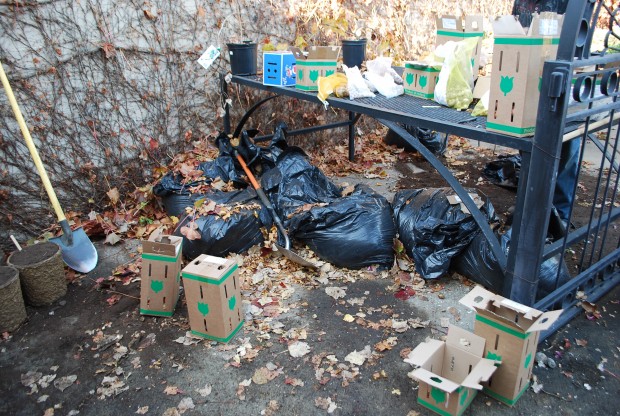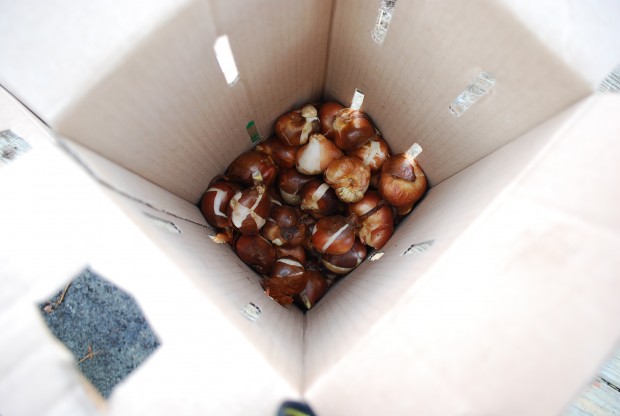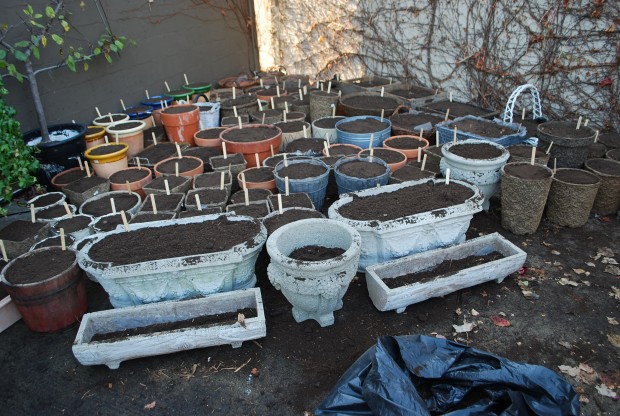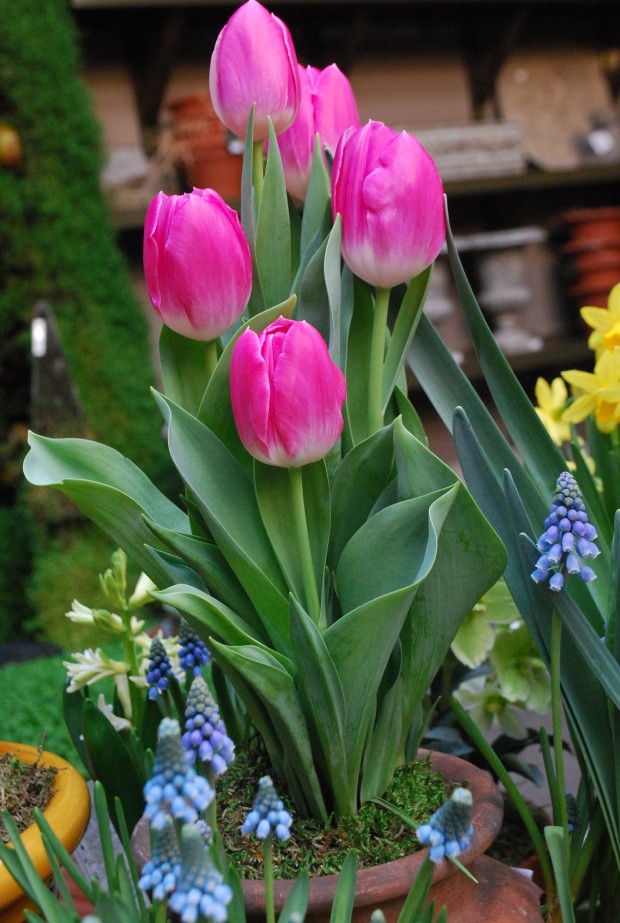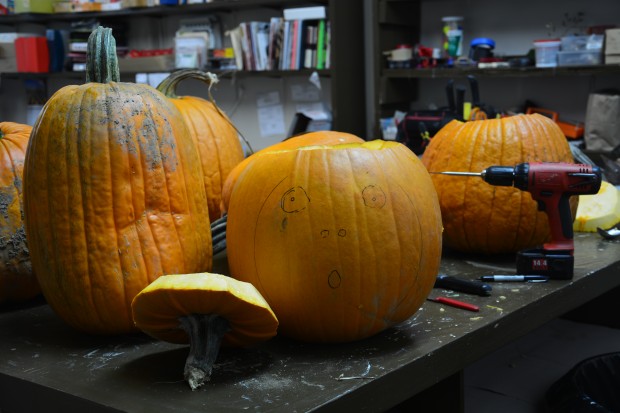 I will confess that I look forward to Halloween. Though it is first and foremost a low budget fright night celebrating demons, devils, and the walking dead, it is also a garden party. The worst horror for me-after the harvest, the garden season is done until next year. Halloween, by contrast, is an angst free celebration of the coming of the dark time. Though no childhood celebration of Halloween of mine was complete without carved and lighted pumpkins, every year I consider foregoing this ritual. The pumpkins are incredibly heavy. Gutting them is a messy and slimy affair. The carving takes more time than you think. No one lights pumpkins for a week or two-it is a one night delight. Are you in?
I will confess that I look forward to Halloween. Though it is first and foremost a low budget fright night celebrating demons, devils, and the walking dead, it is also a garden party. The worst horror for me-after the harvest, the garden season is done until next year. Halloween, by contrast, is an angst free celebration of the coming of the dark time. Though no childhood celebration of Halloween of mine was complete without carved and lighted pumpkins, every year I consider foregoing this ritual. The pumpkins are incredibly heavy. Gutting them is a messy and slimy affair. The carving takes more time than you think. No one lights pumpkins for a week or two-it is a one night delight. Are you in?
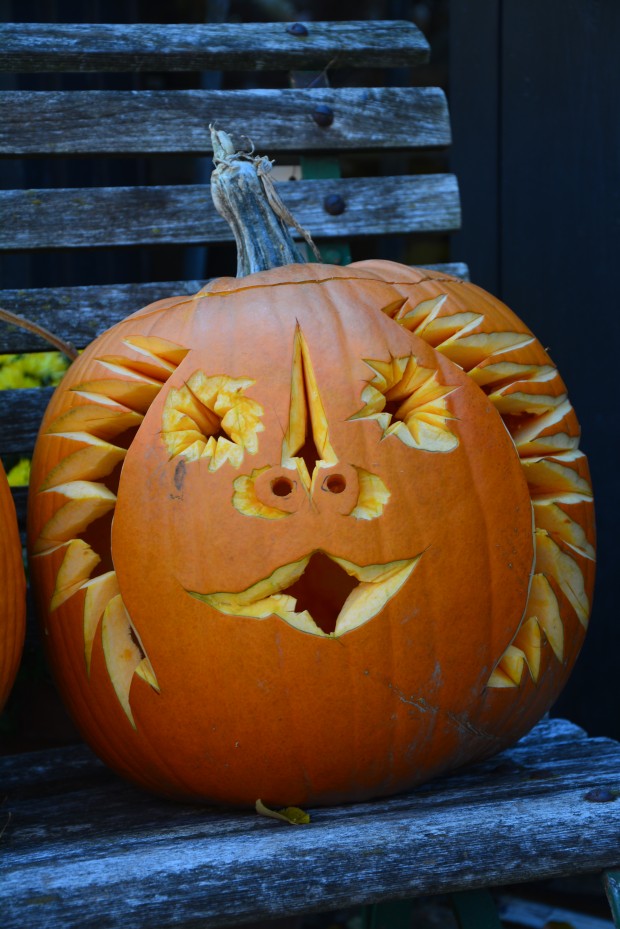 Yes, every year I relent. I carve pumpkins. Prielipp Farms at my local farmer’s market has someone load my choice of carving pumpkins into my car-they are really swell about this. Rob carts them from the suburban to my workroom. There they are, looking at me. My carved pumpkins come last-after I carve them for clients. So they day before Halloween, I have 6 pumpkins to carve.
Yes, every year I relent. I carve pumpkins. Prielipp Farms at my local farmer’s market has someone load my choice of carving pumpkins into my car-they are really swell about this. Rob carts them from the suburban to my workroom. There they are, looking at me. My carved pumpkins come last-after I carve them for clients. So they day before Halloween, I have 6 pumpkins to carve.
 I have no use for patterns. What fun is that, to follow a pattern that someone else has imagined? I make a few marks on the surface with a marker, and get cutting. Every pumpkin carving evolves from the first cut to the finish. Like most other garden projects, one move suggest another. A big idea sketched out, a plan for the placement of walkways, porches and trees will eventually come down to the closing details. Once a carving begins, all those other issues clamoring for my attention fade away. It’s just me, a vague idea, and a knife.
I have no use for patterns. What fun is that, to follow a pattern that someone else has imagined? I make a few marks on the surface with a marker, and get cutting. Every pumpkin carving evolves from the first cut to the finish. Like most other garden projects, one move suggest another. A big idea sketched out, a plan for the placement of walkways, porches and trees will eventually come down to the closing details. Once a carving begins, all those other issues clamoring for my attention fade away. It’s just me, a vague idea, and a knife.
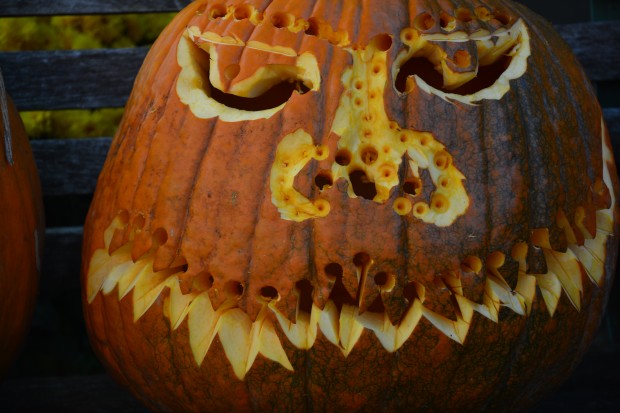 This pumpkin carving began with a drill-and ends up looking like it was drilled. It may be a foolish pleasure, but I highly recommend carving pumpkins for Halloween. It is the last event of the fall. How I enjoy it. Enjoyment of the garden is rarely an academic exercise. It is a shockingly sensory loaded enjoyment of nature, in all of its forms. The sound of wind or the cicadas, the smell of the roses, the sounds of the birds, the tulips opening the first really warm day of spring, watching the Boston Ivy change color, the geese flying south, cutting the lids off the pumpkins-I call this experiential and primary source material for a life appreciative of nature. Halloween is just the right dose of mock horror I need at the end of the season.
This pumpkin carving began with a drill-and ends up looking like it was drilled. It may be a foolish pleasure, but I highly recommend carving pumpkins for Halloween. It is the last event of the fall. How I enjoy it. Enjoyment of the garden is rarely an academic exercise. It is a shockingly sensory loaded enjoyment of nature, in all of its forms. The sound of wind or the cicadas, the smell of the roses, the sounds of the birds, the tulips opening the first really warm day of spring, watching the Boston Ivy change color, the geese flying south, cutting the lids off the pumpkins-I call this experiential and primary source material for a life appreciative of nature. Halloween is just the right dose of mock horror I need at the end of the season.
 I do get lots of visitors on Halloween. I want to make it worth the while of the both of us. Once my carved pumpkins were set, I was pleased. I had company coming.
I do get lots of visitors on Halloween. I want to make it worth the while of the both of us. Once my carved pumpkins were set, I was pleased. I had company coming.
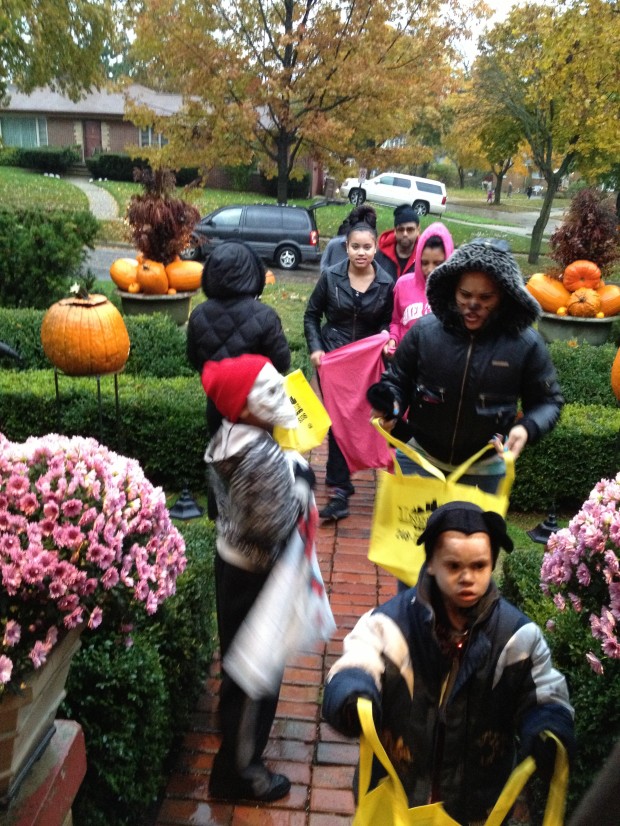 Our Halloween was perfect. Rainy and ominously windy. I only worried for a moment that no one would come. Of course they would come. Halloween is but one night every year. And come they did.
Our Halloween was perfect. Rainy and ominously windy. I only worried for a moment that no one would come. Of course they would come. Halloween is but one night every year. And come they did.
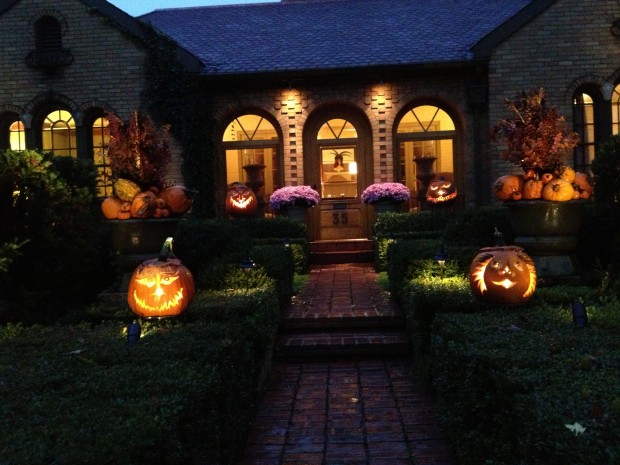 I was so worried that my votive candles in my pumpkins would blow out, considering the gusty winds and rains. Rob sent me home with 6 Belgian made candles whose claim to fame is their willingness to burn in adverse conditions. The wind does not blow these candles out. These candles not only stayed lit in the wind and rain, they blackened the insides of the pumpkins-to great effect, I might add.
I was so worried that my votive candles in my pumpkins would blow out, considering the gusty winds and rains. Rob sent me home with 6 Belgian made candles whose claim to fame is their willingness to burn in adverse conditions. The wind does not blow these candles out. These candles not only stayed lit in the wind and rain, they blackened the insides of the pumpkins-to great effect, I might add.
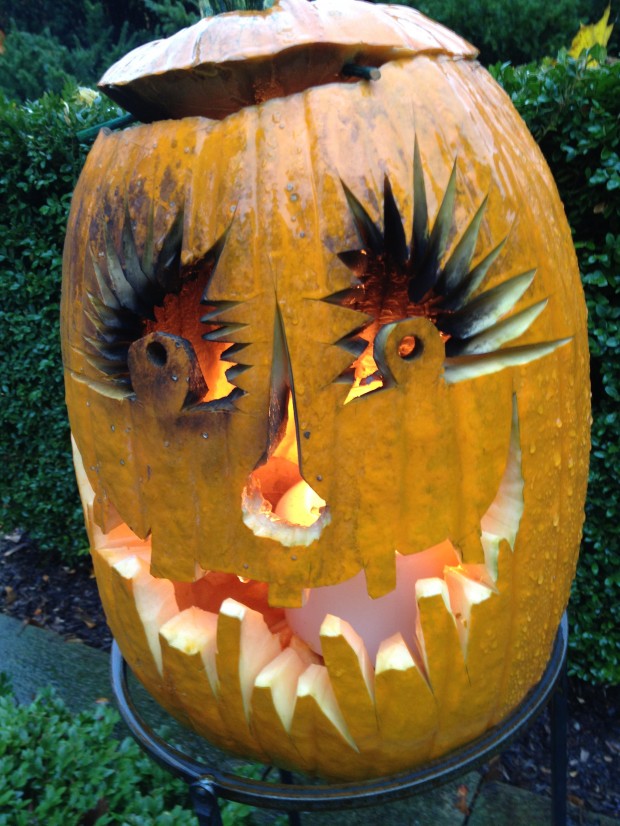 Early in the evening, I could see that my pumpkins were cooking, given the strength of the Belgian candles. At my request, Buck vented all of the pumpkin lids with florists picks. Who knew those Belgian candles would provide another dimension to my Halloween garden! The carved pumpkins promptly blackened-this was a horrifying event I had not anticipated. The smell was rather delicious, and the steam rising was dramatic. I was scrambling to make sure they wouldn’t collapse before the end of the evening.
Early in the evening, I could see that my pumpkins were cooking, given the strength of the Belgian candles. At my request, Buck vented all of the pumpkin lids with florists picks. Who knew those Belgian candles would provide another dimension to my Halloween garden! The carved pumpkins promptly blackened-this was a horrifying event I had not anticipated. The smell was rather delicious, and the steam rising was dramatic. I was scrambling to make sure they wouldn’t collapse before the end of the evening.
 Trick or treaters coming up my walk were treated to the smell of cooking pumpkin, and the visual experience of superheated pumpkin in the rain steaming from every cut. Rob and I spent some time observing the scene from the sidewalk. Every little visitor was talking about the pumpkins. Which one they liked the best. There were lots of questions at the door about who carved them.
Trick or treaters coming up my walk were treated to the smell of cooking pumpkin, and the visual experience of superheated pumpkin in the rain steaming from every cut. Rob and I spent some time observing the scene from the sidewalk. Every little visitor was talking about the pumpkins. Which one they liked the best. There were lots of questions at the door about who carved them.
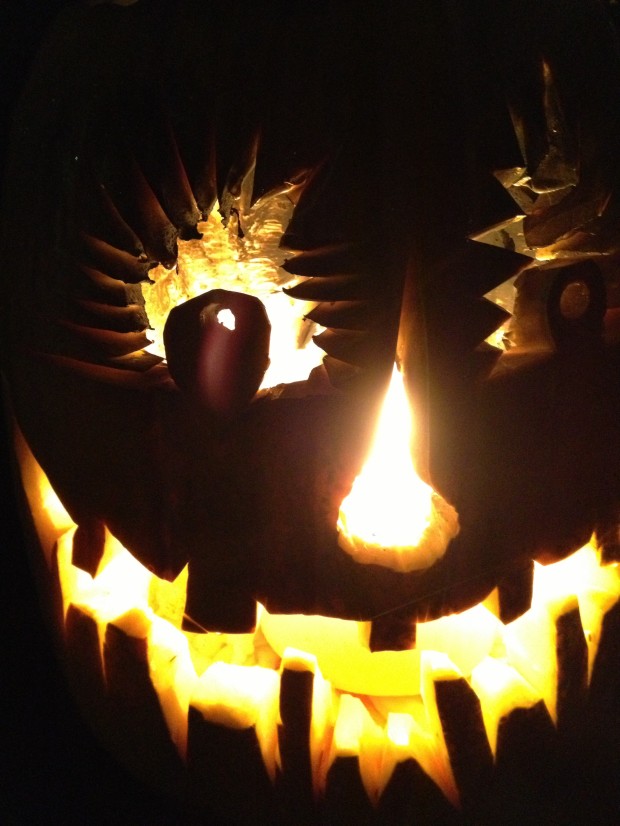 My garden design life is a serious life. I see it that way. But there are those moments in the garden that are memorably and simply great fun. I suspect that I enjoyed my Halloween at least as much as my guests.
My garden design life is a serious life. I see it that way. But there are those moments in the garden that are memorably and simply great fun. I suspect that I enjoyed my Halloween at least as much as my guests.
 The only time I see this group of kids who live in my neighborhood is Halloween night. They don’t have an appreciation of my yellow magnolias, or the shapes of my boxwood. But they do respond to what I have carved from the fruits of the harvest. Every one of them says thanks. The very youngest children say thanks too, prompted by the parents accompanying them.
The only time I see this group of kids who live in my neighborhood is Halloween night. They don’t have an appreciation of my yellow magnolias, or the shapes of my boxwood. But they do respond to what I have carved from the fruits of the harvest. Every one of them says thanks. The very youngest children say thanks too, prompted by the parents accompanying them.
 The hauling and heaving around of my big pumpkins in the process of carving them-it took its toll. I have the old lady backache, and my hands are still sore. So be it. This Halloween was more fun than I bargained for.
The hauling and heaving around of my big pumpkins in the process of carving them-it took its toll. I have the old lady backache, and my hands are still sore. So be it. This Halloween was more fun than I bargained for.
 The garden’s most memorable moments seem to revolve around that surprise I did not see coming.
The garden’s most memorable moments seem to revolve around that surprise I did not see coming.
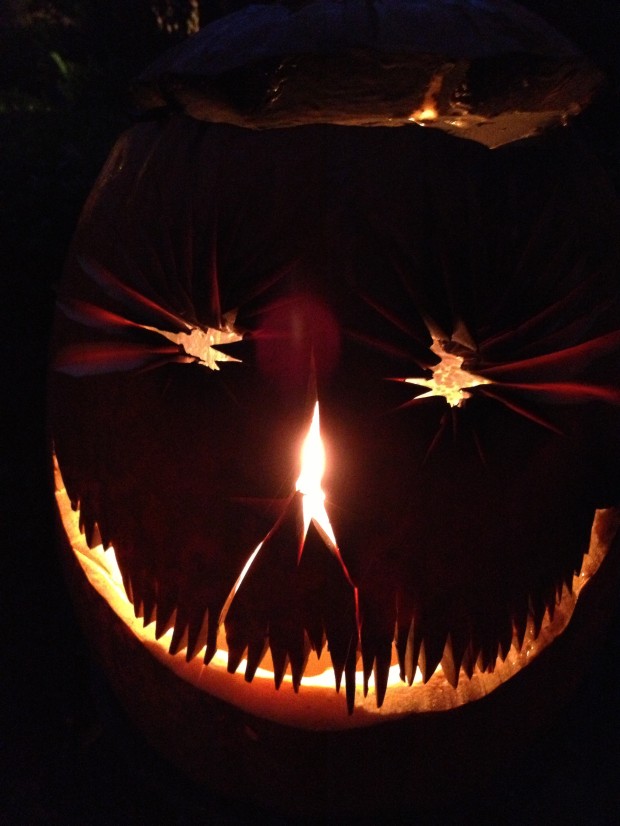 Once it was dark, these faces took on another dimension, given the interaction of rain, wind, and fire.
Once it was dark, these faces took on another dimension, given the interaction of rain, wind, and fire.
 This Halloween visitor could not have been more than 3 feet tall. I would guess he was 9 years old. His costume- sensational. We were all having fun.
This Halloween visitor could not have been more than 3 feet tall. I would guess he was 9 years old. His costume- sensational. We were all having fun.
